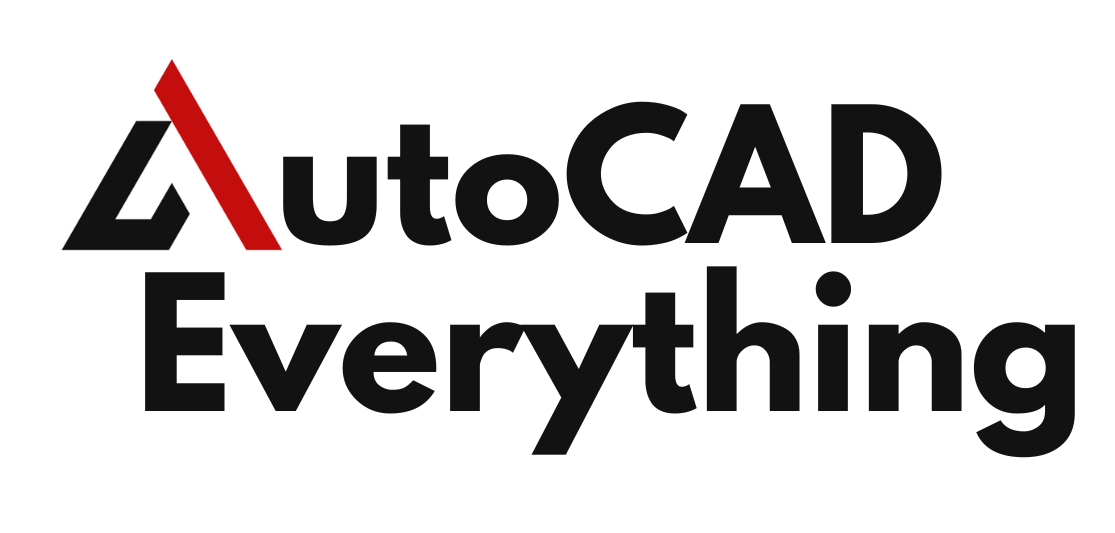Introduction
Dynamic blocks in AutoCAD are a powerful tool that goes beyond standard blocks by adding flexibility and customization. Unlike traditional blocks, which are static, dynamic blocks come with adjustable properties such as size, orientation, visibility, and rotation, making them versatile and highly efficient. Dynamic blocks reduce the need for creating multiple versions of the same block and streamline complex designs with reusable components. This guide will walk you through the basics of creating and using dynamic blocks, helping you customize your designs with ease.
Table of Contents
What are Dynamic Blocks in AutoCAD?
Dynamic blocks are reusable blocks with built-in parameters that allow them to adapt to different needs within a drawing. These blocks can be modified by stretching, rotating, flipping, or changing visibility states, depending on how they are configured.
Key Advantages of Dynamic Blocks:
- Improved Efficiency: Create a single dynamic block that can be adjusted to fit multiple scenarios, reducing the number of blocks required for different configurations.
- Customization: Users can modify dynamic blocks to meet specific project requirements without needing to create new blocks each time.
- Reduced File Size: Dynamic blocks reduce the number of individual blocks in your file, keeping it organized and lighter in size.
- Simplified Editing: With dynamic blocks, changes made to the block definition update all instances, making it easier to maintain consistency across your design.
Dynamic blocks are especially useful for components like doors, windows, furniture, and mechanical parts that often require different sizes, orientations, or variations within the same drawing.

Common Uses for Dynamic Blocks
Dynamic blocks are valuable for a range of design components across various fields:
- Architecture: Adjustable door and window sizes, furniture layouts, and customizable wall sections.
- Mechanical Design: Configurable gears, fasteners, and machine components with adjustable parameters.
- Electrical Design: Flexible symbols for outlets, switches, and lighting fixtures that can be rotated or scaled.
- Landscaping: Scalable trees, shrubs, and hardscape elements that can be adapted to different designs.
How to Create a Dynamic Block in AutoCAD
Creating a dynamic block requires defining the block itself and adding parameters to allow it to be manipulated. Here’s a step-by-step guide:
Step 1: Define the Basic Block
- Draw the Elements: Start by drawing the objects that will make up the block. For instance, if you are creating a door block, draw the door outline, swing arc, and frame.
- Convert to Block: Type
BLOCKin the Command Line and press Enter. In the Block Definition window, give the block a name (e.g., “Dynamic_Door”), select a base point (such as a hinge point for the door), and choose the objects to include in the block. - Save the Block: Click OK to save the block. It is now a standard block without dynamic properties.
Step 2: Open the Block in the Block Editor
To add dynamic properties, you need to open the block in the Block Editor.
- Enter the Block Editor: Type
BEDITin the Command Line and press Enter. Select the block you just created and click OK to open it in the Block Editor. - Access the Block Authoring Palette: The Block Editor opens a set of tools specifically for adding dynamic properties. The Block Authoring Palette contains the parameters and actions you’ll use to make the block dynamic.
Step 3: Add Parameters to the Block
Parameters define the aspects of the block that can be adjusted. Some of the most common parameters include Linear, Rotation, Flip, and Visibility.
- Adding a Linear Parameter:
- A Linear Parameter allows you to adjust the length of an object within the block, such as resizing a table or a door.
- Select Linear from the Parameters tab in the Block Authoring Palette.
- Specify the start and end points of the parameter, typically along the axis you want to stretch or adjust.
- Adding a Flip Parameter:
- A Flip Parameter allows you to mirror the block across a specified axis, which is useful for components like doors that swing in multiple directions.
- Select Flip from the Parameters tab.
- Place the Flip Parameter along the line where you want the block to mirror (e.g., through the center of the door).
- The flip axis will let you rotate the block along this axis once in use.
- Adding a Rotation Parameter:
- A Rotation Parameter allows you to rotate the block around a specified point, which can be useful for items like adjustable signage or piping.
- Select Rotation from the Parameters tab and specify the base point around which the block will rotate.
- Define the rotation angle range, such as 0 to 180 degrees, to control the rotation limit.
- Adding a Visibility Parameter:
- A Visibility Parameter allows you to create multiple versions of a block within a single block definition, each with different visible elements. This is useful for components that have multiple configurations (e.g., different types of desks or windows).
- Select Visibility from the Parameters tab and place the parameter in the desired location.
- Use the Visibility States panel to create different states, each with unique elements that appear or disappear based on the state selected.
Step 4: Assign Actions to the Parameters
Actions define what happens when a parameter is manipulated. Each parameter requires an associated action to make it functional.
- Add Stretch Actions:
- For a Linear Parameter, add a Stretch Action. Select Stretch from the Actions tab and choose the Linear Parameter.
- Specify the objects that will be stretched and the direction of the stretch. This is useful for resizing tables, cabinets, or other objects.
- Add Flip Actions:
- For a Flip Parameter, add a Flip Action. Select Flip from the Actions tab and choose the Flip Parameter.
- This will allow you to mirror the block across the specified axis.
- Add Rotate Actions:
- For a Rotation Parameter, add a Rotate Action. Select Rotate from the Actions tab and choose the Rotation Parameter.
- This will enable the block to rotate around the specified base point.
- Add Visibility Actions:
- If you created Visibility States, you don’t need to add specific actions, as the visibility parameter itself will control which elements are visible in each state.
Step 5: Test and Save the Dynamic Block
Before closing the Block Editor, it’s important to test the dynamic block to ensure that the parameters and actions work as intended.
- Test Block: In the Block Editor, click on the Test Block button to see how the block behaves with the parameters and actions.
- Save the Block: Once satisfied, click Close Block Editor and save the changes.
Your block is now dynamic and ready for use. You can insert it into your drawing as you would with any other block, and adjust it as needed using the dynamic properties.
Using Dynamic Blocks in a Drawing
To use your dynamic block, simply insert it into your drawing and adjust its properties as needed.
- Insert the Dynamic Block: Type
INSERTin the Command Line and select the dynamic block from the list of available blocks. - Adjust Dynamic Properties: After inserting the block, click on it to reveal its adjustable properties. Use the grips to stretch, rotate, flip, or change visibility, depending on the parameters you added.
- Fine-Tune the Properties: For more precise adjustments, you can access the Properties palette to fine-tune the block parameters like scale or rotation angle.
Best Practices for Using Dynamic Blocks
- Use Descriptive Names: Name each dynamic block with a description of its function, such as “Dynamic_Window_TypeA” or “Adjustable_Door_36in.”
- Organize a Library: Store dynamic blocks in a centralized library for easy access across projects. This saves time and ensures that all team members use the correct blocks.
- Limit Complexity: Keep dynamic blocks as simple as possible while still providing the necessary adjustments. Overly complex dynamic blocks can slow down AutoCAD performance.
- Use Visibility States Wisely: For components with multiple configurations (e.g., different types of doors or windows), visibility states keep your block organized and easy to use.
- Test Thoroughly: Always test dynamic blocks before integrating them into projects to ensure they function as expected under different scenarios.
Conclusion
Dynamic blocks in AutoCAD are a game-changer for designers looking to improve efficiency and flexibility. By allowing blocks to adapt to different requirements within a single definition, dynamic blocks eliminate the need for multiple versions of the same component. Whether you’re working on architectural layouts, mechanical designs, or electrical schematics, dynamic blocks can save time, reduce file clutter, and enhance your overall workflow. By mastering the creation and use of dynamic blocks, you can significantly improve your productivity and project consistency in AutoCAD.
FAQs
- What is a dynamic block in AutoCAD?
A dynamic block is a reusable block with adjustable properties, allowing it to change shape, size, orientation, or visibility within the same block definition. - How do I create a dynamic block in AutoCAD?
Use the Block Editor to add parameters and actions to a standard block. Parameters define adjustable properties, while actions determine what happens when those properties are modified. - What is the difference between a standard block and a dynamic block?
A standard block is static, while a dynamic block includes parameters that allow for changes in size, rotation, visibility, and configuration. - What are visibility states in dynamic blocks?
Visibility states allow you to create multiple configurations within a single block, showing or hiding specific components as needed. - Can dynamic blocks improve file size management in AutoCAD?
Yes, by reducing the number of blocks needed for different configurations, dynamic blocks help keep file sizes manageable and organized.

